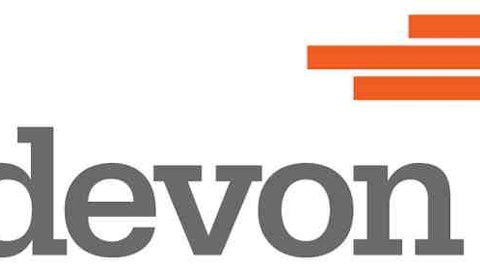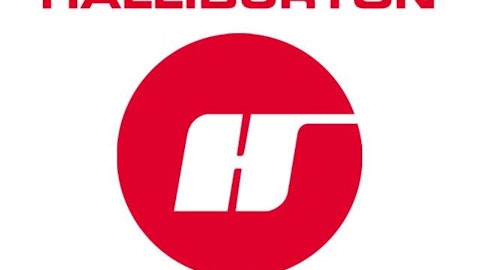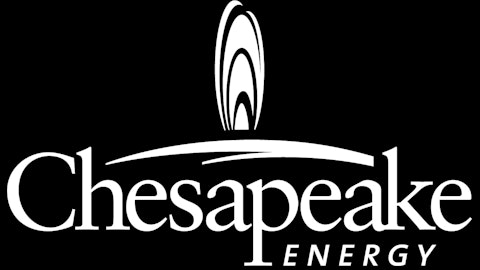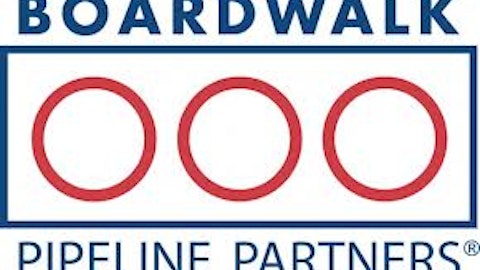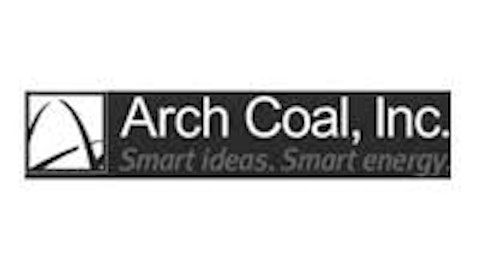Chesapeake Energy Corporation (NYSE:CHK) reports its quarterly results on Thursday. I like to prepare ahead of the announcement so the numbers don’t bias my perception of the company’s results. Here are five things I’m looking for in Chesapeake Energy Corporation (NYSE:CHK)’s earnings this week.
What to look for this quarter
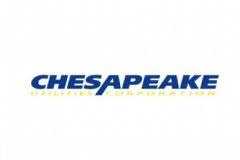
CEO Robert Lawler will make his first appearance on the company’s conference call. Previously Lawler worked for Anadarko Petroleum as Senior Vice President of the company’s international and offshore operations. Now he faces the tough task of righting Chesapeake Energy Corporation (NYSE:CHK)’s financial ship and restoring investor confidence.
We will likely hear additional details on his turnaround strategy in the call. This program will likely be made of four parts: 1) additional asset sales to pare down debt, 2) increased focused on higher priced liquid production, 3) improved corporate governance, and 4) renewed cost cutting efforts.
(2) More asset sales coming
During the heyday of natural gas, former CEO Aubrey McClendon borrowed heavily to fund an aggressive expansion program. If there was even a rumor of gas in an area, Chesapeake Energy Corporation (NYSE:CHK) had its checkbook open and was willing to outbid any rival. But such moves left the company in dire financial straits with $12 billion in debt and a $3.5 billion funding gap by the start of 2013.
To shore up its balance sheet, Chesapeake Energy Corporation (NYSE:CHK) has announced its intentions to use joint ventures, asset sales, and other transactions to generate $4 billion to $7 billion in capital. By mid-year the company has made progress towards this goal though not always on terms the Street would like.
Earlier this year, Sinopec purchase a 50% share of Chesapeake Energy Corporation (NYSE:CHK)’s Mississippi Lime assets for $1.02 billion. But it’s clear investors were none too pleased by the transaction as many felt the deal undervalued Chesapeake’s properties. At roughly $2,400/acre, the deal was well below prior transactions in the region and it’s clear that the company lacks power at the negotiating table.
For Sinopec the joint venture gives the company access to about 850,000 net acres in northern Oklahoma. With its big cash balance, the company has positioned itself as a liquidity provider for troubled companies. And it appears the strategy is paying off. Sinopec has been posting impressive returns for investors while it cost-effectively completes its North American expansion.
Chesapeake is closing in on its $4 billion target in asset sales. With management expressing the intentions to do more deals in upcoming quarters, look for additional details in the call.
Long term trends
(3) Shifting production mix
Chesapeake’s turnaround hinges on its ability to slash its capital spending program and refocus on projects that can quickly generate cash flow. The company is making progress on this front. Management projects 2013 CapEx spending to fall 43% to $7.6 billion with priority given to drilling and completion projects.
Chesapeake’s turnaround also depends on its ability to generate more liquid production. Natural gas accounted for 90% of the company’s revenues in 2009 but that figure declined to 78% last year. Curtailing drilling activities in areas like the Marcellus should translate into higher profitability and better returns on investment.
(4) Cost cutting and efficiency gains
Chesapeake has been making progress on its cost cutting initiatives. In December, the company eliminated 275 head office employees as part of its turnaround program. These efforts are starting to show up in Chesapeake’s financial results with administration costs falling 26% year-over-year to $1.11/mcf last quarter. Investors will want to see continued improvements on this front.
Investors should also be watching the company’s operational metrics closely. During the last conference call management discussed several new initiatives to improve performance. Specifically, the company is talking highly of its new pad drilling program to reduce cycle times. Look to see if that talk shows up in the results.
Catalysts
(5) Higher natural gas prices
As always in any conference call, you should expect to hear bullish prognostications about the future of natural gas and its unlimited potential. I don’t take management’s self-interested view too seriously on this issue. However, there are reasons to be cautiously optimistic about the prospects of natural gas.
First, according to the EIA, natural gas production is projected to only grow 1% in 2013. That’s a big drop from 8% and 4% production growth we saw in 2011 and 2012 respectively.
Second, natural gas demand is building. Low prices are starting to encourage power plants to switch over from more expensive coal. We’ve also seen companies begin to convert heavy vehicles and locomotives to natural gas in order to take advantage of low prices.
As the second largest producer of natural gas in the country, higher prices would go a long way to speeding up the turnaround at Chesapeake.
Foolish bottom line
Chesapeake Energy Corporation (NYSE:CHK) is moving from a basket case to a viable turnaround. It’s clear the company is starting to use asset sales and higher margin production to regain its former standing in the industry. If this momentum can continue, the stock has a lot of upside potential.
The article 5 Thing to Look for From Chesapeake This Earnings Season originally appeared on Fool.com and is written by Robert Baillieul.
Robert Baillieul has no position in any stocks mentioned. The Motley Fool has the following options: long January 2014 $30 calls on Chesapeake Energy. Robert is a member of The Motley Fool Blog Network — entries represent the personal opinion of the blogger and are not formally edited.
Copyright © 1995 – 2013 The Motley Fool, LLC. All rights reserved. The Motley Fool has a disclosure policy.
